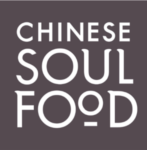Description: Article in Seattle Met Magazine for the special issue on Asian food.
Article:
WHEN I SAW A NEW DOCTOR RECENTLY for my frozen shoulder, the intense pain I felt as he manipulated my arm did not derail our stream of consciousness exchange about the perfect xiao long bao—soup dumplings. Food is a constant when two Chinese people start a conversation. Before long, we began commiserating about friends and strangers alike posing that eternal question: “What’s the best place to get Chinese food in Seattle?”
I danced around giving a definitive response during my entire tenure as the food editor at the Seattle P-I and in the nine years since. It has taken me decades to gain perspective on why my own parents decided in 1980 to open a Chinese restaurant in small-town Missouri, and also on the landscape of the industry as a whole. Many Chinese restaurants in Seattle and across the United States are less about creating culinary statements and more about survival for immigrant families and an investment in the dreams of future generations.
For my parents, who had been college-educated professionals in Taipei but couldn’t transfer their careers to the states, 23 years of cashew chicken and sweet-and-sour pork equaled three college tuitions for their children.
The result is that menus tend to fall somewhere on the spectrum between lowest-common-denominator American Chinese food to a comprehensive blend of Cantonese, Shanghainese, and Sichuanese dishes. It’s hard to name a “best place” when being a culinary destination isn’t necessarily the restaurant’s reason for existing.
That said, anytime I hear about a new Chinese restaurant or that a restaurant has a new chef, I am ever optimistic that I will find a gem of a dish, one that achieves its highest ideal of flavor and texture balance. We describe that quality as zheng—the ultimate compliment.
This is purely personal, but at Chinese restaurants my family tends to order ma po tofu, pot stickers, and braised beef noodle soup. These dishes have become ubiquitous among the broccoli chickens and Mongolian beefs on most menus, and represent a yardstick of sorts.
What I look for isn’t necessarily a vertical mastery of a particular regional cuisine, but a clear respect for what makes a dish zheng. Ma po tofu should not contain peas and carrots or taste sweet (from a sweetened chili sauce or sweetened soy sauce) nor should the sauce be brown from the addition of soy sauce and/or bean sauce—all versions I’ve encountered around Seattle.
Pot stickers are best made with hand-rolled dough and panfried until the bottom, slightly thicker than the rest of the dumpling, is caramelized, brown, and crisp. Telltale shortcuts include deep-frying or searing previously boiled dumplings. Dry-fried green beans should be wok blistered just so but not deep-fried greasy.
Since we’re on the subject of Sichuanese food, let’s agree that a handful of dried red chilies tossed in a stir-fry at the last minute does not make a dish authentic. Nor does adding copious amounts of reconstituted dried minced garlic. Nuance and balance matter in Chinese cooking regardless of its regional inspiration—even cashew chicken and sweet-and-sour pork can achieve greatness.
